If you’re a history buff, then Kehlsteinhaus is probably going to be close to the top of your list of sites to visit. Known as Eagle’s Nest, this incredible building sits perched among the mountains of southern Germany. It was used exclusively by members of the NSDAP (Nazi party) for government and social meetings. It was visited at least 14 times by Hitler himself.
- Reasons to visit Eagle’s Nest
- When to visit Eagle’s Nest?
- How to get to Eagle’s Nest
- What to see and do at Eagle’s Nest
- Other tips for visiting
Reasons to visit Eagle’s Nest
It’s a piece of history
Quite simply, it’s a piece of fascinating history and you get to walk in the footsteps of some of the most notorious people ever known. The building that remains at Eagle’s Nest was built as a social venue for senior Nazi Party members. It was actually built as a tearoom of all things. What few realise is that Hitler’s home (the Berghof) and southern headquarters – his second seat of power – were located on Obersalzberg, at the foot of the Eagle’s Nest mountain. The Berghof no longer stands so you can’t visit it, but the whole area is fascinating to understand and explore.
It’s beautiful
Even if you’re not that interested in retracing the steps of long dead Dictators, the mountainous region is so beautiful that anyone interested in scenery and views should still visit anyway. There are lots of well signed walking trails from the top, and exploring them is a joy – well worth a day of your time.

When to visit Eagle’s Nest?
Eagle’s Nest is only open mid May to late October, though it all depends on the weather. As soon as it gets snowy and slippery, the mountain can be extremely dangerous. In fact, to access the site it’s just a 4 metre wide road, with multiple tunnels and hairpin bends (the public are not allowed to drive up to the site, but more on that later), and 12 people died constructing it!
My advice would be to visit in the shoulder period (so mid May to early June and late September and October) to avoid the crazy crowds that summer brings. Plus if it’s too hot it’s not that pleasant to go hiking.
How to get to Eagle’s Nest
Option 1. Stay in Obersalzberg
Staying in the town of Obersalzberg at the base of the mountain means a really easy visit to the site. From here, you can catch the bus at the foot of Obersalzberg right to the top of the mountain. The public cannot drive to the top, you have to catch the bus or walk up a very steep incline (not recommended unless you are very fit and have plenty of time). You then reach the final part of the ascent which is via the original cylindrical brass lift accessed through a tunnel. Hitler hated using the lift as it was claustrophobic and I can see why – it really wasn’t an enjoyable experience.
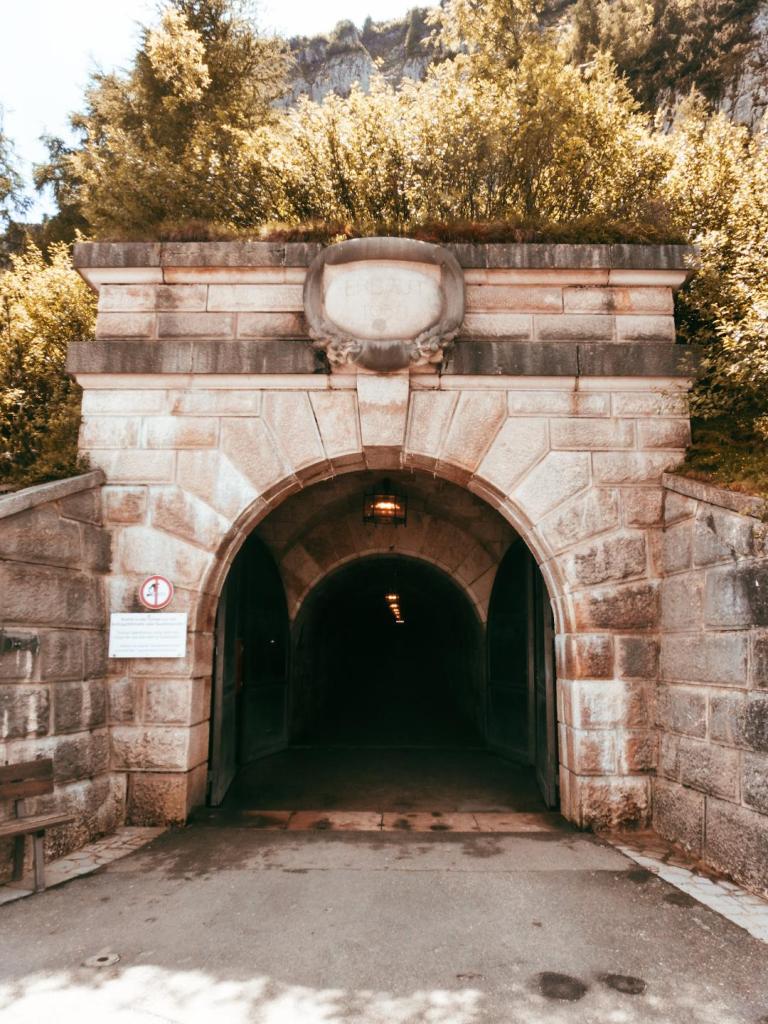
Option 2. Stay in Salzburg
Salzburg is the nearest major city, but actually lies in a different country to the Eagle’s Nest – Austria. It’s a beautiful city and you can check out my blog post on it (coming next week). You can get from Salzburg to Obersalzberg via direct bus in about 1hr, or drive in about 35 minutes. From there, you just follow the route above once in Obersalzberg.
Option 3. Visit from Munich
Munich is the largest German city nearby, about 100 miles West of the Eagle’s Nest. There are no direct connections by train from Munich to the Eagle’s Nest, so you have to take a train to Berchtesgaden (transferring at Freilassing), then a short bus/taxi ride to Eagle’s Nest parking lot, and then take the bus ride up the mountain, as mentioned above. It’s a bit of a faff and in total takes around 3 hours, which is why I recommend one of the first two options.
The alternative to visit from Munich is to join a guided tour. That way you are driven straight to the base of the mountain in just under 2 hours and have more time at the site.

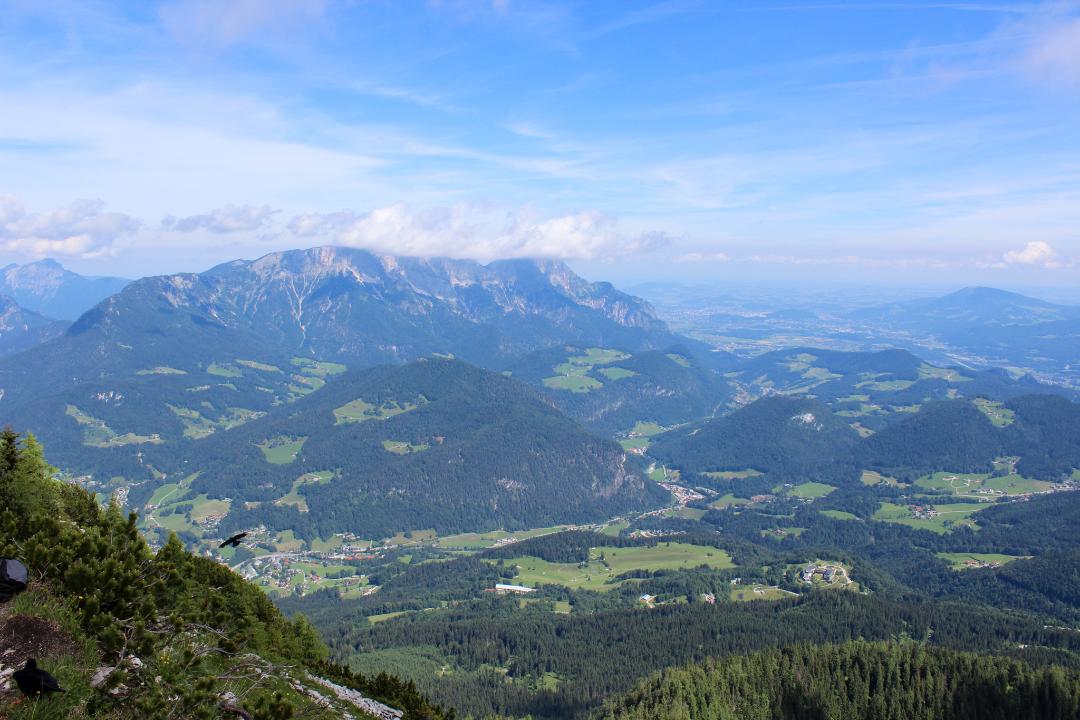
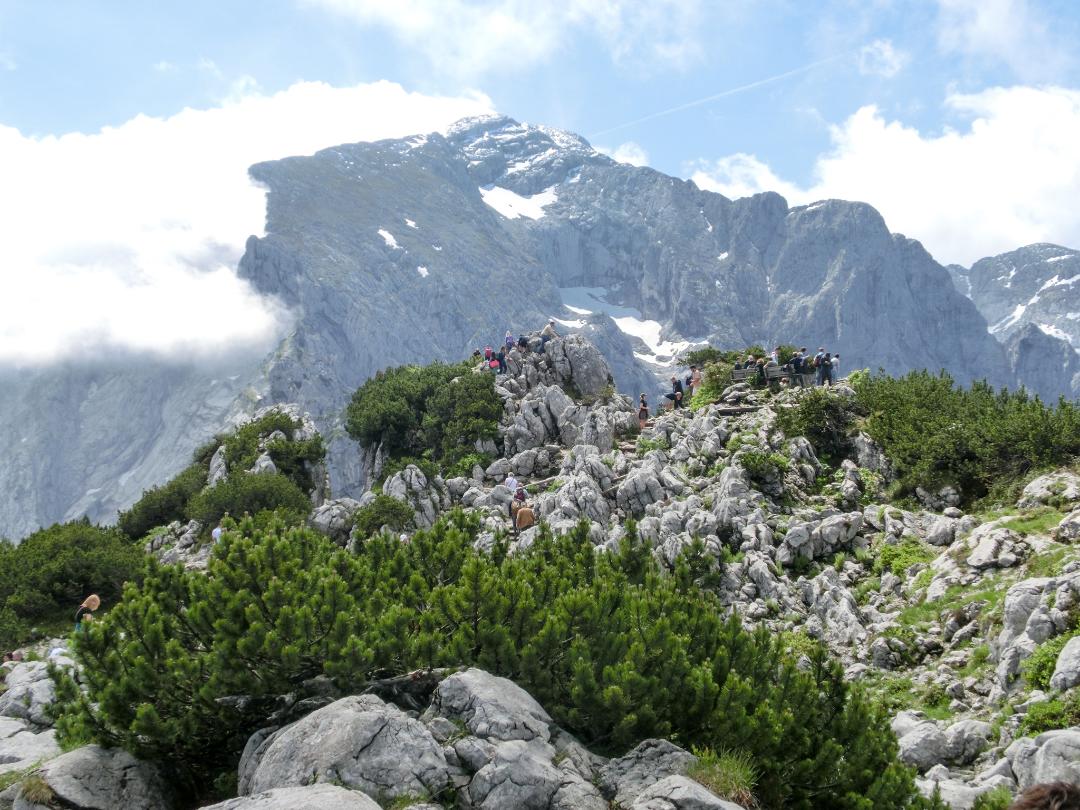
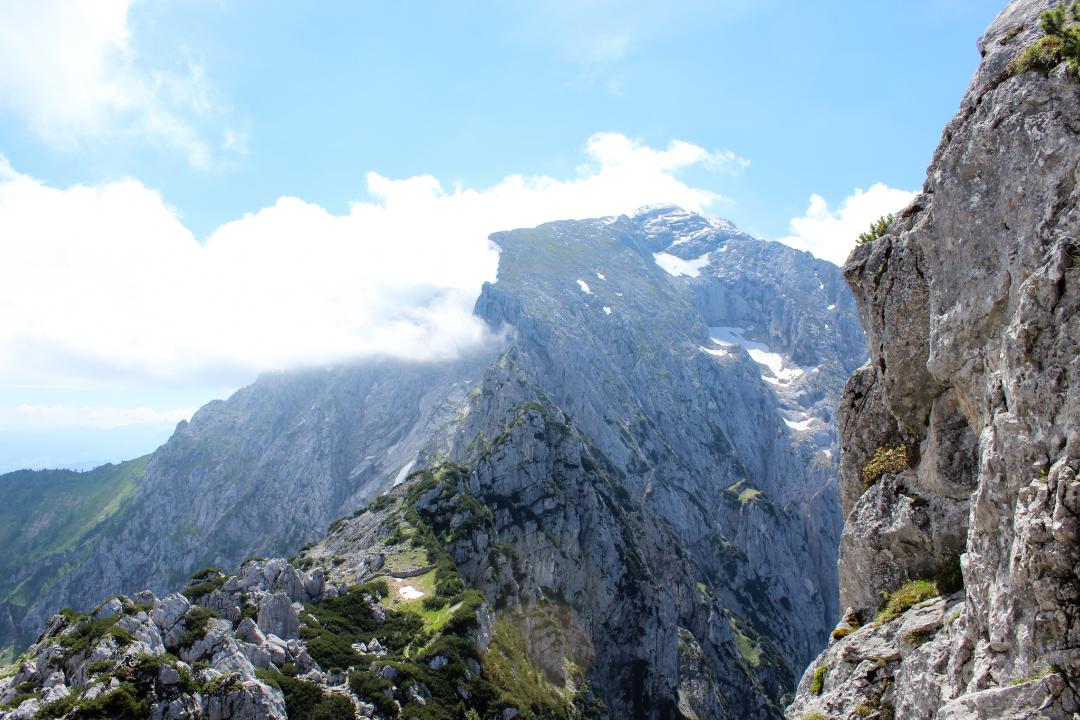
What to see and do at Eagle’s Nest
Once at the site, there are a number of amazing things to do:
Visit Eagle’s Nest Restaurant
Obviously the highlight – The Eagle’s Nest that remains is effectively now a restaurant with a scenic terrace just below the summit of a mountain. There are a few plaques, some information and even a fireplace gifted from Mussolini on show, but you’re mainly there for the magnificent views, combined with the horrible memories of an evil Dictator, to enjoy a unique experience.
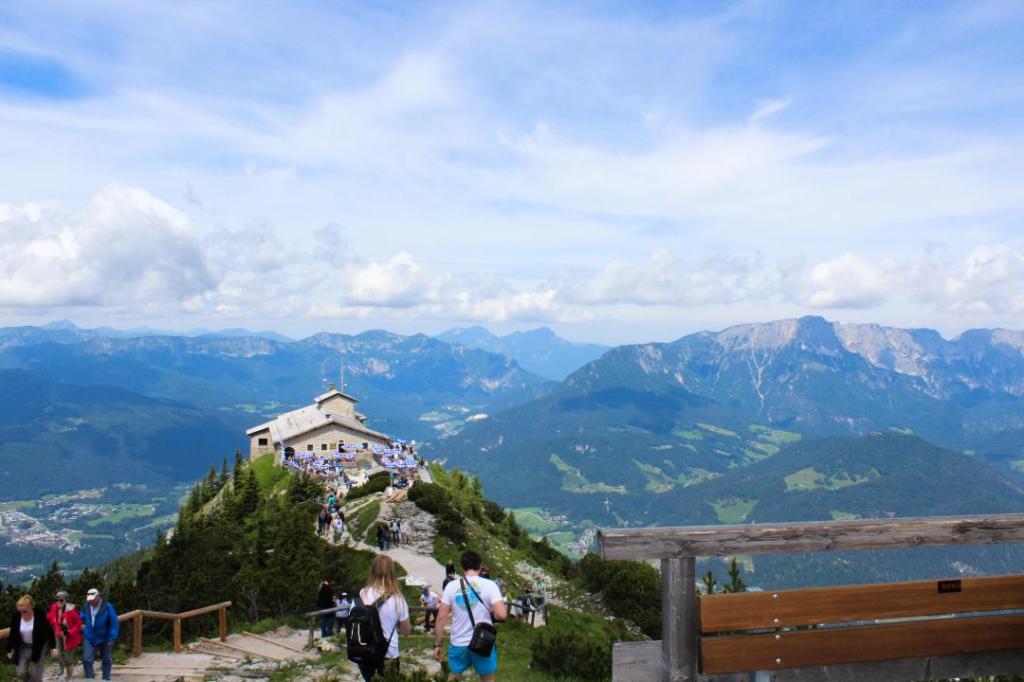
Explore the National Park
The Eagle’s Nest sits within an incredible National Park, with stunning views. It’s here that Hitler (then a wannabe maniac) was inspired in his childhood, and his media propaganda machine built a lot of his image based on this version of him in the mountains (strong, outdoorsy, connected to nature etc etc). The truth is he actually hated the spot because of the changeable weather and being scared of heights.
Now from The Eagle’s Nest viewpoint you can follow a number of walks around the park, and I really recommend taking the time to do so.

Visit the Documentation Centre
At the foot of the mountain in Obersalzberg lies the documentation centre – built on the site of the Berghof (Hitler’s summer house). The house itself was destroyed by the Allied Troops at the end of the war. Now a museum explaining the history of the place and Hitler’s time there, the boards are in German, but you can get an English audio guide which is well worth it.
From the Documentation Centre, you can also explore underground in to the vast bunker system. Construction began in 1943 after the Battle of Stalingrad, and the bunkers contained meeting rooms, offices and archives – plus of course a plush set of living quarters for Hitler. You can’t help but boggle at the meglomania gone mad!
Other tips for visiting
- Wear comfortable shoes as you really don’t want to miss out on the walks
- Pre COVID no reservations were required, but arrive early as the queues do get busy
- If you have a dog, Eagle’s Nest is dog friendly so that’s fine
- Plan to spend a full day there – it really is worth it!
And that completes my guide to visiting Eagle’s Nest. Have you ever visited? Would you like to go? Let me know in the comments below. And if you enjoyed this post, you might enjoy some of my other Germany posts:
- Cologne – for baroque architecture and beautiful river views.
- The Drachenfels – for beautiful castles and scenic hikes.
- Nuremberg – for Nazi history, amazing sausages and medieval castles
- Berlin – for amazing museums, an Olympic stadium, and stacks of history
- Munich – for beer cellars, palaces and Oktoberfest.
Stay safe and happy travelling!

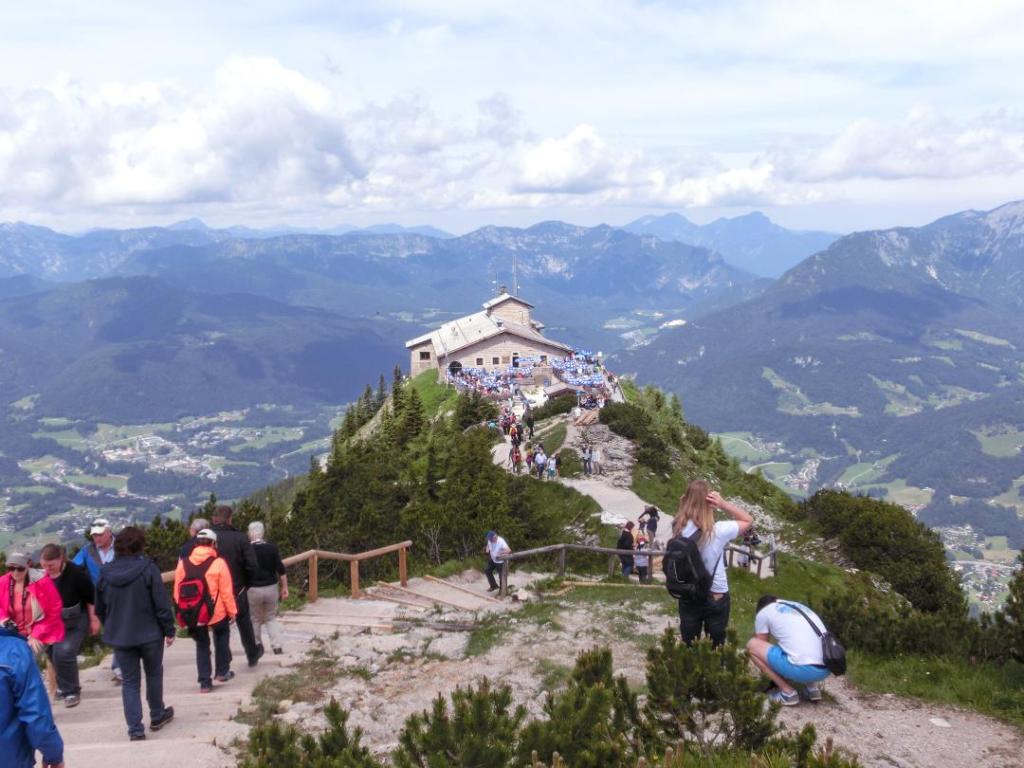
Leave a comment